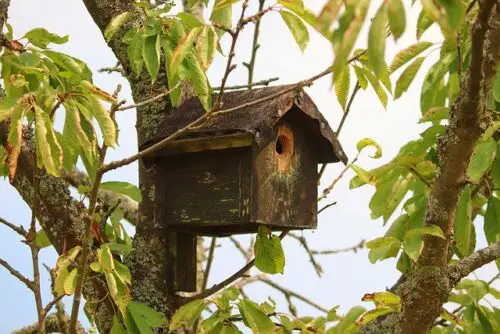Turning your garden into a paradise for local wild bird populations is a huge step in the right direction. Many of the changes that you will need to make will support a wide range of other species, as well as birds, which will increase your garden’s biodiversity and make you a friend to nature. Before you start to design your bird garden, you should make an effort to research and explore a number of natural areas close to your home, as this will allow you to see what local natural bird habitats look like. Once you have completed this task, here are eight things you should do.
Plant a Variety of Florae
One of the best ways to make your garden bird-friendly and approve its appearance is to plant a variety of florae. You should try to re-create the layers of plant growth that naturally occur in local areas. You could plant small shrubs and trees in same-species clumps, as this will boost fertility and pollination. Planting a number of conifers will provide shelter for birds during colder and bad weather, and a safe place to sleep. If you have a dead tree, you should leave it for the birds to perch on and attach birdhouses to. You should also leave any vines that grow, as they make great nesting sites.
Avoid Planting Non-Native Species
When adding flowers and greenery to your garden, you should do your best to avoid planting invasive non-native species. The first reason for this is because they could be directly dangerous to native birds in your area. These invasive plants will compete with native plants in your garden and local area to survive, and they may even spread into wild populations. If this happens, it could have a devastating effect on the natural biodiversity and water quality and could create fuel for a fire. You will be putting all wildlife at risk.
Provide Plenty of Nutritional Food
If you know what birds are common in your area, you can put out the right bird food and feeder to support them. In order to increase biodiversity, you should look into adding a variety of bird feeders and food to your garden, so all populations can be supported throughout the year. In order to keep on top of and stocked up on your garden bird supplies, you should look into purchasing them from littlepeckers.co.uk. This online bird food store allows you to browse a variety of high-quality products for both wild and pet birds. They also have a fantastic range of wildlife products too.
Build and Install Bird Boxes
It is common for birds that choose tree cavities for nesting to struggle to find a suitable nest site. This is because natural cavities are scarce, and many rely on woodpeckers to create a place to roost or nest. One of the easiest and most effective ways to make your garden more bird-friendly is to increase the variety and abundance of nest boxes on your property. You can purchase them or build one yourself. They can be built using any wood, but you should avoid wood that has preservatives and paint on the inside of the box. There are some great designs out there that support different species and look great.

Make Nesting Material Readily Available
Now the birds have somewhere to nest, whether it is a natural cavity you refuse to mess with in your garden or a lovely bird box, the next thing you need to make available to your birds are nesting materials. Birds like to use unraked twigs and leaves for their nests, so you should scatter them in an area of your garden, rather than raking them up and throwing it away. Other items you can make available to them include plant fluff, moss, feathers, dry grass (not treated with pesticides) and pine needles. If you don’t want the mess or want it to blow away, you can stuff these materials in a feeder.
Allow Your Garden to Grow
Most gardens in the UK are paved and maintained, which looks great, but it doesn’t create a good or welcoming habitat for birds. When a lawn is cut short and trees and shrubs are overly pruned, it removes the potential food sources and habitat for the food the birds eat and the birds themselves. If you like to have a tidy garden, it may feel wrong to allow it to grow, but allowing your plants to thrive without getting out of control and becoming overwhelming to look at is completely doable. You can start by allowing one area of your grass to grow and plant native, low-maintenance flowers and greenery.
Supply a Source of Water
Birds will get most of the water they need through their diet, however, they do enjoy open sources of water to drink and bathe, especially during the warmer months. Birds will drink and bathe in water the most when it is hot, as this helps to keep them hydrated and cool them down. However, providing birds with a water source during the winter months is crucial too, as many of the natural water supplies can ice over, which will make them unavailable. If you choose to supply water to birds using a bird bath, you must give it a good clean every few days during summer and keep it topped up.
Try to Avoid Using Pesticides
Pesticides can harm birds, both directly and indirectly. Those that kill insects and other creatures that birds may feed on can limit their resources, which can lead to starvation, especially during highly populated areas or the winter months. The typical lawn also tends to be full of a host of different chemicals, which can lead to sick or starving birds. If you have a pest problem in your garden, then consider using natural methods to limit the number of pests, rather than artificial chemicals. The more wildlife-friendly your garden is, the more predators will appear to eat the pests that they call food.
Making your garden bird-friendly doesn’t require too much work. The small changes you make to your garden will make a huge difference to your local birds, which you will be able to witness with your own eyes and ears.

Leave a Reply